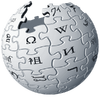Element 4 - Element 5 - Element 6
Boron is Element number 5 on the Periodic Table. In its crystalline form, it is a brittle, dark metalliod; In its amorphous form, it is a brown powder. It is very hard and is marked as 9.5 on the Mohs scale. It is commonly founded in compounds like borates.
History
Boron was first discovered and recognized as an element in 1808 by Joseph Louis Gay-Lussac and Louis Jacques Thénard. Pure boron was first made by Sir Humphry Davy, through reducing boric acid with potassium.
Existance in Nature
Boron is relatively rare in the universe. However, many sources of boron have been found on earth. Compounds containing boron like borax and boric acid can be found natually. There are also a lot of minerals containing borates. Elemental boron is usually produced from minerals like colemanite kernite and ulexite.
Production
Boron can be produced by reducing boron trioxide(B2O3) with reactive metals like magnesium, or by reducing boron halides with hydrogen at high temperatures.
Properties
Physical Properties
Crystalline boron is a hard material. Its melting point is around 2076 °C.
Chemical Properties
When exposed to air, boron forms a protective layer of boron trioxide on the surface, preventing further corrosion.
At higher temperatures, boron burns in oxygen to form boron trioxide:
Compounds
Boron's various compounds are very hard; one example is boron carbide(B4C). It is over 9 on the Mohs scale. It is used in various applications, such as bulletproof armoring and abrasive, which is used to remove the top layer from any hard object to clean it, like sandpaper. Some other boron compounds, like boron nitride(BN) and titanium diboride(TiB2), are also very hard.
Boron can form several compounds with hydrogen. These compounds are often called boranes. Examples include diborane(B2H6) and decaborane(B10H14).
Boron can form halides with all four common halogens(fluorine, chlorine, bromine and iodine). Boron halides are typically Lewis acids.
Boron can also form borides with some metals like magnesium and calcium.
Applications
Boron trioxide is used to make borosilicate glass, which is more resistant than normal glass. The element is present in some high-strength materials, like boron fiber and boron carbide ceramic. Boron is also a component of neodymium magnets.

|
The original article was at Boron. The list of authors can be seen in the page history. As with Chemistry Wiki, the text of Wikipedia is available under the GNU Free Documentation License. |
